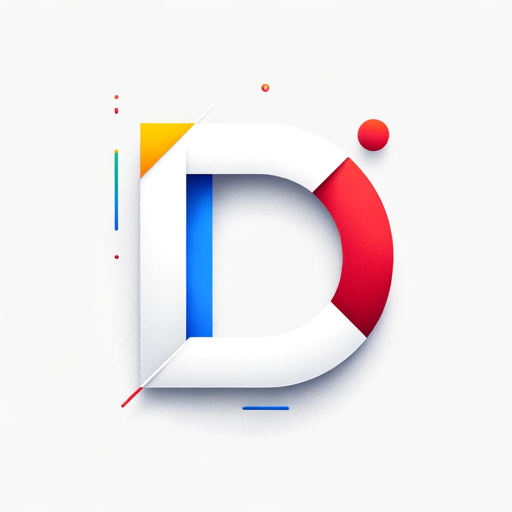Lucid-AI-powered flowchart creation
AI-powered flowcharts made easy
Build a flowchart for a new product development
Sketch out a flowchart for an event planning process
Design a flowchart for a customer service workflow
Create a flowchart to illustrate a software development lifecycle
Related Tools
Load More
The Lucid Dreaming Guide
Learn how to lucid dream the scientific way, with a replica of lucid dream expert Daniel Love. www.luciddreaming.ai

Dream Painting
Transforming dreams into pictures and insights

Dream Interpretation
Multilingual Dream Interpreter Analyzer fuses Jung's symbolism, Freud's focus on hidden desires, and neurocognitive insights into emotional and memory processes in dreams. This integration provides a thorough, multi-layered perspective, unlocking profound

Clarity Advocate
Refines and streamlines your messages for clarity

Ecrire Clair
Expert en écriture claire, réduisant les phrases et simplifiant le langage.

ThinkClarity
Enhances writing with structured, actionable advice (v2.7.3 2024-03-14. --- To begin, submit "Help me improve this text for more clarity: "[your text OR code to improve]"" --- Submit 📖 'R' to display the User Guide.
20.0 / 5 (200 votes)
Introduction to Lucid
Lucid is a specialized tool designed to assist users in creating clear, concise, and effective flowcharts. Its main purpose is to help visualize complex ideas, processes, and systems, transforming them into easily understandable diagrams. Lucid is particularly adept at organizing information in a structured manner, making it an excellent choice for planning, organizing, and presenting various types of data. For example, a project manager could use Lucid to map out project timelines and tasks, ensuring all team members understand the workflow and dependencies. Similarly, a business analyst might use Lucid to create process diagrams that illustrate the flow of information within an organization, helping to identify bottlenecks and inefficiencies.

Main Functions of Lucid
Flowchart Creation
Example
A software development team uses Lucid to create a flowchart that outlines the steps in their development process, from initial planning to deployment and maintenance.
Scenario
In this scenario, Lucid helps the team visualize the sequence of tasks, identify critical paths, and ensure that all necessary steps are accounted for. This flowchart serves as a reference point for all team members, promoting consistency and clarity.
Process Mapping
Example
A manufacturing company uses Lucid to map out their production process, highlighting each stage from raw material input to finished product output.
Scenario
Lucid enables the company to document each step in their production line, identify areas for improvement, and train new employees more effectively. By having a clear visual representation, the company can optimize their processes and reduce inefficiencies.
Organizational Chart Creation
Example
An HR department uses Lucid to create an organizational chart that displays the hierarchy and reporting structure within the company.
Scenario
This chart helps new employees understand the organizational structure, clarifies reporting lines, and assists in workforce planning. Lucid makes it easy to update the chart as the organization grows and changes.
Ideal Users of Lucid Services
Project Managers
Project managers benefit from Lucid's ability to create detailed project plans and timelines. By using flowcharts to map out tasks and dependencies, they can ensure that all team members are aligned and aware of their responsibilities. This leads to more efficient project execution and better risk management.
Business Analysts
Business analysts use Lucid to create process diagrams that help visualize and analyze business operations. These diagrams are essential for identifying inefficiencies, optimizing processes, and communicating complex workflows to stakeholders. Lucid's clear visualizations support better decision-making and strategic planning.
Educators
Educators can use Lucid to create diagrams that explain complex concepts to students. By visualizing information, teachers can enhance understanding and retention. Lucid is also useful for designing course outlines and lesson plans, ensuring that educational content is well-organized and easy to follow.
Engineers
Engineers use Lucid to design and document technical systems and processes. Flowcharts and diagrams are critical for understanding system architecture, troubleshooting issues, and communicating technical information to non-engineers. Lucid helps engineers present complex information in a clear and accessible manner.

How to Use Lucid
1
Visit aichatonline.org for a free trial without login, also no need for ChatGPT Plus.
2
Choose the type of flowchart or diagram you need from the available templates or start from scratch.
3
Use the intuitive drag-and-drop interface to add shapes, connectors, and text to your flowchart.
4
Customize your diagram with various formatting options, such as colors, fonts, and styles to enhance readability and visual appeal.
5
Save and export your flowchart in various formats, or share it directly with collaborators for real-time feedback and editing.
Try other advanced and practical GPTs
Script Master
AI-powered scripts for content creators
JobHunter GPT
AI-powered career tools for job seekers

Ads Pro
AI-Powered Facebook Ad Optimization

Magic
AI-driven solutions for everyday tasks

Code Wizard
AI-powered coding solutions for all
Translate any Language | Best Translator
AI-powered translations made easy.

HIKARI AIGIRL
Your AI companion for creative conversation.

Conlang Creator
AI-powered conlang creation tool

国際情報分析官 - OSINT AI
AI-powered intelligence for global insights.

Front-Ant Developer
AI-powered UI to React component tool

Best Product Finder Assistant
AI-powered product research at your fingertips

v5.0 - Gerry, The Logo Designer - For Startup
AI-Powered Custom Logo Design for Startups

- Project Management
- Brainstorming
- Business Planning
- Process Mapping
- Educational Diagrams
Lucid Q&A
What is Lucid primarily used for?
Lucid is primarily used for creating flowcharts and diagrams to visualize and structure ideas, processes, and data.
Do I need a subscription to use Lucid?
No, you can start using Lucid for free without any subscription or login through aichatonline.org.
Can I collaborate with others using Lucid?
Yes, Lucid supports real-time collaboration, allowing multiple users to edit and comment on diagrams simultaneously.
What types of diagrams can I create with Lucid?
You can create a variety of diagrams including flowcharts, mind maps, organizational charts, network diagrams, and more.
Is Lucid user-friendly for beginners?
Absolutely, Lucid's interface is designed to be intuitive and easy to use, making it accessible for both beginners and advanced users.